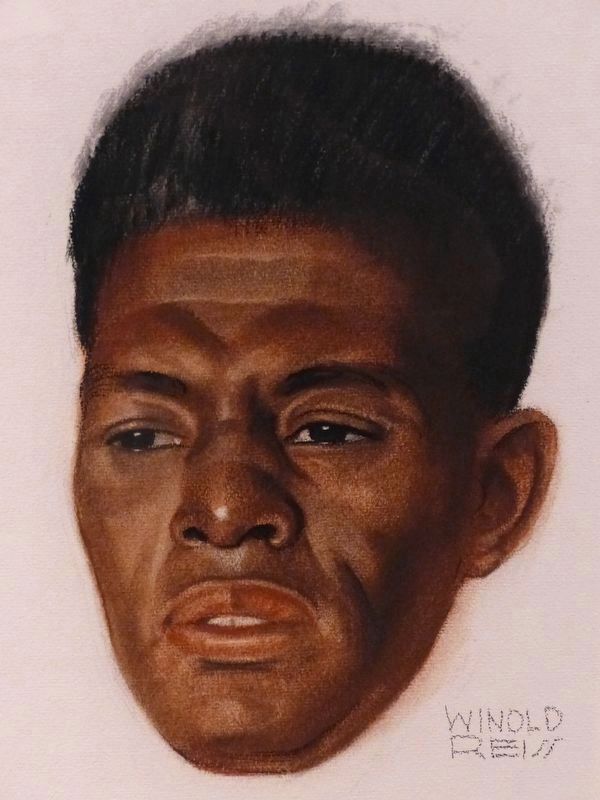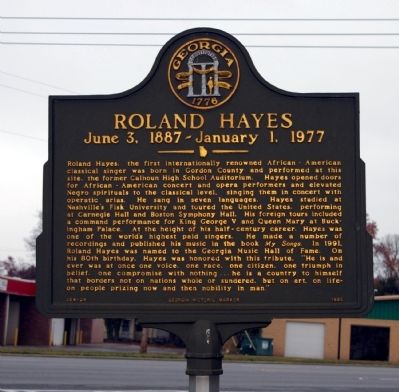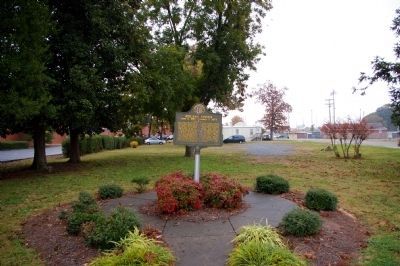Calhoun in Gordon County, Georgia — The American South (South Atlantic)
Roland Hayes
June 3, 1887 - January 1, 1977
Roland Hayes, the first internationally renowned African-American classical singer was born in Gordon County and performed at this site, the former Calhoun High Auditorium. Hayes opened doors for African - American concert and opera performers and elevated Negro spirituals to the classical level, singing them in concert with operatic arias. He sang in seven languages. Hayes studied at Nashville's Fisk University and toured the United States, performing at Carnegie Hall and Boston Symphony Hall. His foreign tour included a command performance for King George V and Queen Mary at Buckingham Palace. At the height of his half-century career. Hayes was one of the world's highest paid singers. He made a number of recordings and published his music in the book My Songs. In 1991, Roland Hayes was named to the Georgia Music Hall of Fame. On his 80th birthday, Hayes was honored with this tribute. "He is and ever was at once one voice, one race, one citizen, one triumph in belief, one compromise with nothing … he is a country to himself that borders not on nations whole or sundered, but on art, on life - on people prizing now and then nobility in man."
Erected 1995 by Georgia Department of Natural Resources. (Marker Number 064-34.)
Topics and series. This historical marker is listed in these topic lists: African Americans • Arts, Letters, Music. In addition, it is included in the Georgia Historical Society, and the Historically Black Colleges and Universities series lists. A significant historical year for this entry is 1991.
Location. 34° 30.096′ N, 84° 57.429′ W. Marker is in Calhoun, Georgia, in Gordon County. Marker is at the intersection of Oothcalooga Street and South Fair Street, on the right when traveling east on Oothcalooga Street. Touch for map. Marker is at or near this postal address: 540 Oothcalooga Street, Calhoun GA 30701, United States of America. Touch for directions.
Other nearby markers. At least 8 other markers are within 3 miles of this marker, measured as the crow flies. The Calhoun Depot (approx. ¼ mile away); a different marker also named Calhoun Depot (approx. ¼ mile away); Gordon County (approx. 0.4 miles away); Calhoun, Ga, May 18, 1864. (approx. 0.4 miles away); Johnston's Rear Guard Stops McPherson (approx. 0.6 miles away); Battle of Lay's Ferry (approx. 2.2 miles away); Richard Peters Plantation (approx. 2.2 miles away); Calhoun War Memorial (approx. 2.3 miles away). Touch for a list and map of all markers in Calhoun.
Also see . . . Rpland Hayes
. New Georgia Encyclopedia website entry (Submitted on December 8, 2008, by David Seibert of Sandy Springs, Georgia.)

Photographed By Allen C. Browne, July 22, 2017
3. Roland Hayes
This 1924 portrait of Roland Hayes (1887-1977) by Winold Reiss hangs in the National Portrait Gallery in Washington, DC.
“Born on the plantation where his mother had once been a slave, lyric tenor Roland Hayes found his voice while singing African American spirituals in the church choir. He first encountered classical music through a recording of Italian opera tenor Enrico Caruso. ‘That opened the heavens for me,’ Hayes later recalled. ‘The beauty of what could be done with the voice just overwhelmed me.’ Initially rebuffed by professional managers because of his race, Hayes arranged and promoted his own concerts, steadily gaining recognition while touring from coast to coast. In 1920 he traveled to Europe, where he gave a command performance for British royalty and won over a hostile crowd in Berlin. Returning to the United States in 1923, Hayes continued to break new ground, appearing as a soloist with the Boston Symphony Orchestra and pushing for integrated seating at his concerts in southern cities.” – National Portrait Gallery
“Born on the plantation where his mother had once been a slave, lyric tenor Roland Hayes found his voice while singing African American spirituals in the church choir. He first encountered classical music through a recording of Italian opera tenor Enrico Caruso. ‘That opened the heavens for me,’ Hayes later recalled. ‘The beauty of what could be done with the voice just overwhelmed me.’ Initially rebuffed by professional managers because of his race, Hayes arranged and promoted his own concerts, steadily gaining recognition while touring from coast to coast. In 1920 he traveled to Europe, where he gave a command performance for British royalty and won over a hostile crowd in Berlin. Returning to the United States in 1923, Hayes continued to break new ground, appearing as a soloist with the Boston Symphony Orchestra and pushing for integrated seating at his concerts in southern cities.” – National Portrait Gallery
Credits. This page was last revised on October 25, 2021. It was originally submitted on November 28, 2008, by David Seibert of Sandy Springs, Georgia. This page has been viewed 2,109 times since then and 29 times this year. Photos: 1, 2. submitted on November 28, 2008, by David Seibert of Sandy Springs, Georgia. 3. submitted on December 3, 2017, by Allen C. Browne of Silver Spring, Maryland. • Kevin W. was the editor who published this page.

